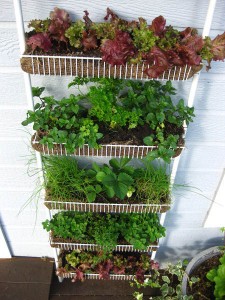 Photograph by Steven Foster
Photograph by Steven Foster
|
| DISCOVER THE BENEFITS OF LEMONGRASS TEA |
|
|
Herb to Know: Lemongrass
• Cymbopogon citratus
• (Sim-bo-PO-gon sit-RAY-tuss)
• Family Gramineae
• Tender perennial
Among lemon herbs, lemongrass is the big one, towering 3 to 6 feet above the others—lemon verbena, lemon mint (actually a monarda), lemon balm, lemon basil, lemon thyme. A blend of clear lemon flavor and flowery overtones, it’s also one of the tastiest, as Southeast Asian cooks have long known.
The genus Cymbopogon comprises fifty-six species of mostly aromatic grasses native to the Old World Tropics. Lemongrass (C. citratus) is native to southern India and Sri Lanka; it is cultivated for its oil in Florida and the Rio Grande Valley of Texas as well as in Sri Lanka, the Seychelles, and Uganda.
Lemongrass’s dense clumps of strap-shaped leaves may reach 6 feet tall. The individual leaves, 3 feet long by 1/2 inch wide, taper at both ends, and the tips may arch gracefully. The edges of the blades are very sharp. Blue-green throughout the summer, the leaves turn rusty red in fall. Lemongrass bears large, loose compound flower heads when grown in the Tropics, but it rarely flowers otherwise.
The generic name Cymbopogon comes from the Greek words kymbe, “boat”, and pogon, “beard”, and refers to the inflated spathe (bract) that encloses the flower spike. The specific name citratus is Latin for “lemony”; the leaves contain the lemony constituents citral and linalool.
As a medicine, lemongrass has been used traditionally to reduce fever by inducing sweating, alleviate cold symptoms and headaches, calm upset stomachs, and relieve spasms. It inhibits the growth of fungi and bacteria and is used externally to treat ringworm, lice, athlete’s foot, and scabies. Researchers in Brazil recently reported that the constituent linalool had a strong sedative effect on laboratory mice and speculated that humans could relax by inhaling significant quantities while taking an herbal bath containing the substance.
In Southeast Asian cuisine, the tender leaf bases of lemongrass are chopped and used to flavor fish, sauces, and curries. The heart of the young shoots may be eaten as a vegetable with rice. The tougher parts of the leaves can be cooked in soup or steeped for tea or vinegar, then removed and discarded before serving. The tea is delicious either hot or iced. Lemongrass also is used in Greece and Turkey to substitute for yogurt in the preparation of a traditional fermented milk-and-cereal dish during religious holidays when consuming animal milk is prohibited.
Lemongrass oil is used to adulterate lemon oil and to make an artificial violet perfume, as well as to scent soaps, hair oils, and herbal baths. The leaves of the related C. nardus are also used for flavoring food, but this species is better known as the source of citronella oil, widely used in bygone days to repel insects. Lemongrass oil, too, has been used as an insect repellent.
Lemongrass is grown in warm climates as an ornamental for its foliage and flowers. In India, a row of lemongrass plants is said to repel tigers, but in areas where tigers are not a problem, a hedge of lemongrass can conceal an unsightly view. A single plant makes a nice vertical statement in a lemon garden, and bundles of the leaves can add height to dried arrangements. Trimmings can be chopped and dried for use in potpourris or teas. If you wish to pulverize the dried leaves for flavoring, do it just before you’re ready to use them, as the flavor fades quickly.
Growing Lemongrass
Lemongrass is hardy only to USDA Zone 10. Give it average or moist soil in full sun. In cooler climates, plant a division outside after the danger of frost is past. Leave plenty of room for expansion: under favorable circumstances, a small division can turn into a clump 21/2 feet wide in five months! Lemongrass is drought resistant but benefits from regular watering. Harvest entire leaves. Where winters are cold, dig up the entire clump in fall, or if it’s too big to overwinter indoors, pot up a division of the crown. In the Deep South, you may try wintering lemongrass outside. Cut back the top and mulch the remaining crown heavily. Veteran herb growers Madalene Hill and Gwen Barclay of Round Top, Texas, report that lemongrass has survived temperatures of 10° to 20°F with this treatment.
Sources
Richters, Goodwood, ON, Canada L0C 1A0. Catalog free. Plants and dried herb of C. citratus; seeds of East Indian lemongrass (C. flexuosus).
Shepherd’s Garden Seeds, 30 Irene St., Torrington, CT 06790. Catalog free. Plants of C. citratus.






